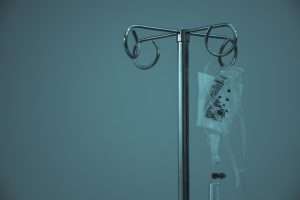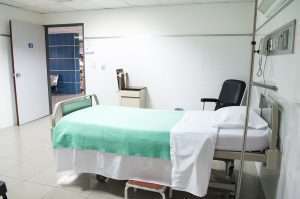Understanding Your Flex Card Eligible Items List
A flex card eligible items list includes healthcare expenses you can cover using pre-tax dollars from a Flexible Spending Account (FSA). Common eligible items include:
- Prescription medications
- Over-the-counter (OTC) drugs (like allergy medicine, cold treatments)
- Medical supplies (bandages, blood pressure monitors, diabetic supplies)
- Vision and dental care products (contact lenses, eyeglasses, orthodontics)
- Health services (doctor visits, physical therapy, mental health counseling)
These IRS-approved products and services let you maximize healthcare spending while lowering overall costs.
I’m Les Perlson, and with over 40 years in the health insurance industry, I’ve helped countless businesses steer employee benefits and simplified complex topics like the flex card eligible items list. Let’s explore your options clearly and simply.

Simple guide to flex card eligible items list:
– am i eligible for a flex card
– flex card eligibility
What is a Flex Card?
A flex card is essentially a special debit card linked directly to your Flexible Spending Account (FSA) or Health Savings Account (HSA). Think of it as your personal healthcare spending assistant—you simply swipe or tap the card at eligible healthcare providers, and voilà! Your payments are covered by pre-tax dollars you’ve already set aside.
When you enroll through your employer or plan administrator, you’ll receive your flex card to use at pharmacies, doctor’s offices, dentists, vision centers, and other qualified healthcare merchants. Each time you make an eligible purchase, the card deducts directly from your account balance—no receipts to submit, no waiting for reimbursement checks. Easy, right?
The IRS has set annual FSA contribution limits at $3,200 for individuals in 2025 (up from $3,050 in prior years). If you’re a couple and both you and your spouse have FSAs through employers, your combined household contribution limit is $6,400. That’s quite a generous opportunity to lower your taxable income and cover healthcare expenses with pre-tax dollars.
Now, here’s the important part: FSAs operate under a “use-it-or-lose-it” rule. Essentially, you need to spend your FSA funds by the end of your plan year, or you might lose what’s left. But don’t panic—many employers offer a grace period (usually around two-and-a-half months) or allow a carryover of up to $640 into the next plan year. So keep an eye on your balance, plan carefully, and avoid leaving money on the table.
FSAs also come in two main types to cover different needs. A Health Care FSA helps you pay for medical, dental, and vision expenses for yourself and your dependents. On the other hand, a Dependent Care FSA covers eligible costs for caring for your dependents, such as daycare or elder care.
Understanding the difference between FSAs and HSAs can get a little confusing. Don’t worry; you’re not alone! Both accounts let you use pre-tax money for healthcare costs, yet they differ in several ways. For instance, FSAs are employer-owned accounts, while HSAs are individually owned. Also, HSAs allow your unused funds to roll over year after year, whereas FSAs usually have limited rollover options. Check out this simple comparison chart below to quickly see how FSAs and HSAs stack up against each other:

| Feature | FSA | HSA |
|---|---|---|
| Eligibility | Available through employers | Requires high-deductible health plan |
| Contribution Limits | $3,200 individual (2025) | $4,150 individual, $8,300 family (2025) |
| Fund Rollover | Limited (use-it-or-lose-it with exceptions) | Full rollover year to year |
| Ownership | Employer-owned | Individual-owned |
| Tax Benefits | Pre-tax contributions | Pre-tax contributions, tax-free growth, tax-free withdrawals |
Want to dive deeper into FSAs specifically? Check out our helpful guide: What is a FSA?.
With a clear understanding of your flex card and the flex card eligible items list, you’ll be well-equipped to make the most of your healthcare dollars, keep more money in your pocket, and stay stress-free come tax time.
Flex Card Eligible Items List
Getting the most from your flex card starts with knowing what you can actually buy with it. The flex card eligible items list isn’t just a random collection of healthcare products – it’s carefully determined by IRS guidelines (specifically Sections 213(d), 105(b), and 125 of the tax code). In plain English, these rules say eligible expenses must primarily help with medical care – diagnosing, treating, or preventing disease, or treating any part of your body.

The good news is that the IRS occasionally updates these guidelines to include more items. A major win came with the CARES Act in 2020, which significantly expanded the flex card eligible items list to cover more over-the-counter medications and products without needing a prescription first.
Shopping with your flex card is surprisingly easy these days. Many stores – both physical and online – have systems that automatically recognize eligible items at checkout. This means less hassle for you when buying items from the flex card eligible items list.
Want to dive deeper into what medical supplies your FSA covers? Check out our comprehensive guide on FSA Eligible Medical Supplies.
Prescription Medications and OTC Drugs on the Flex Card Eligible Items List
One of the most common (and valuable) uses for your flex card is buying medications. Any prescription medication that a licensed healthcare provider prescribes to treat a medical condition is automatically included on the flex card eligible items list. That’s pretty straightforward.
The over-the-counter medication world got much simpler thanks to the 2020 CARES Act. Before this legislation, you’d need a prescription even for basic OTC medications if you wanted to use your flex card. Now, you can simply swipe your card for many common OTC medications without that extra step.
“With the passing of the 2020 CARES Act, many new items and categories are now eligible without a prescription, including cough and cold, allergy and sinus relief and more.”
Your flex card eligible items list for medications now includes everyday essentials like pain relievers (think Tylenol, Advil, or aspirin), allergy medications (like Claritin or Benadryl), cold and flu remedies, antacids for digestive issues, sleep aids, motion sickness treatments, antibacterial ointments, anti-fungal treatments, cough medicines, and sinus medications.
There are still some limitations worth noting. Products used mainly for cosmetic purposes or general health maintenance typically don’t qualify. For example, hair growth products or teeth whitening kits usually aren’t on the flex card eligible items list unless specifically prescribed for a medical condition.
For an even more detailed breakdown of eligible expenses, the FSAFEDS Eligible Expenses resource is incredibly helpful.
Medical Supplies and Equipment on the Flex Card Eligible Items List
Medical supplies and equipment make up a huge chunk of what you can buy with your flex card. These items are vital for many people managing health conditions, recovering from injuries, or dealing with chronic issues.
If you’re monitoring an ongoing health condition, your flex card eligible items list includes important diagnostic tools like blood glucose monitors and testing strips for diabetes management, blood pressure monitors for hypertension tracking, thermometers for fever monitoring, pulse oximeters to check oxygen levels, and cholesterol testing devices.
Taking care of injuries is covered too, with first aid supplies fully included on the flex card eligible items list. This means your card works for bandages, gauze, and medical tape, antiseptic wipes and solutions, complete first aid kits, elastic bandages for sprains, hot and cold packs for injuries, and splints and braces for support.
Since COVID-19 entered our lives, personal protective equipment has been added to the flex card eligible items list when used primarily to prevent COVID-19 spread. This includes face masks, hand sanitizer (as long as it contains at least 60% alcohol), sanitizing wipes, and gloves when used for medical purposes.
For those with mobility or breathing challenges, your flex card covers crutches, canes, and walkers, wheelchairs and mobility aids, CPAP machines and related supplies for sleep apnea, hearing aid batteries, pregnancy and fertility test kits, and breast pumps and lactation supplies for new mothers.
It’s equally important to know what’s not covered. While a blood pressure monitor is eligible, general exercise equipment isn’t (unless prescribed). Bandages are covered, but regular toiletries aren’t. Pregnancy tests are included, but maternity clothes aren’t. The pattern is clear – medical necessity is the deciding factor.
For more details about qualifying medical expenses, the IRS Publication 502 Medical and Dental Expenses is the definitive source.
Vision and Dental Care Items Eligible Under Flex Card
Vision and dental expenses can really add up for families, which is why it’s great that they’re significant components of the flex card eligible items list.
For vision care, your flex card covers prescription eyeglasses (including reading glasses), prescription sunglasses to protect eyes while correcting vision, contact lenses, contact lens solutions and cases, eye drops for treating medical conditions, vision correction procedures like LASIK, and regular eye exams.

Dental care is another area where your flex card can save you significant money. Your flex card eligible items list includes routine dental check-ups and cleanings, fillings, extractions, and root canals, crowns, bridges, and dentures, dental implants, orthodontic treatment (including braces and retainers), fluoride treatments, and protective sealants.
While purely cosmetic dental procedures like teeth whitening generally don’t qualify, they might be eligible if they’re part of treatment for a medical condition – like repairing damage after an accident.
For a comprehensive look at FSA-eligible products related to vision and dental care, our page on FSA Eligible Products has everything you need.
Health Services and Treatments Covered by Flex Card
Your flex card isn’t just for physical products – it covers a wide range of health services and treatments too. The key requirement is that these services must be primarily for medical care rather than general wellness or cosmetic purposes to be included in the flex card eligible items list.
Your card can handle expenses like doctor’s visits and co-pays, specialist consultations, hospital services and stays, laboratory fees and diagnostic tests, imaging services like X-rays and MRIs, non-cosmetic surgical procedures, emergency room visits, and ambulance services.
Therapy services are well-covered too, including physical therapy for injury recovery, occupational therapy to regain daily living skills, speech therapy, chiropractic treatments for back and neck issues, acupuncture (when treating specific medical conditions), mental health counseling and therapy, substance abuse treatment, and smoking cessation programs.

There’s an important distinction to keep in mind: preventive care is generally covered, but services primarily for general well-being or fitness usually aren’t. For example, if your doctor prescribes massage therapy to treat a specific injury, that’s eligible. But a massage just because it feels good after a long week? That’s not on the flex card eligible items list.
When using your flex card for health services, keep in mind you might need to provide additional documentation for certain treatments – especially those that could be considered “dual-purpose” (having both medical and non-medical uses).
For more comprehensive information about eligible medical and dental services, the IRS Medical and Dental Expenses publication provides authoritative guidance.
Items Not Covered by Your Flex Card
Understanding what your flex card won’t cover is just as important as knowing what it will. After all, nobody wants the surprise of having to repay funds or face tax penalties because they accidentally used their card for non-eligible items!
Let’s take a friendly walk through the items that don’t make the cut on your flex card eligible items list – think of this as your “what not to buy” guide.

When you’re standing in the beauty aisle, cosmetic procedures and products generally aren’t covered. This includes things like cosmetic surgery (unless it’s correcting a deformity from injury or disease), Botox treatments for wrinkles (though interestingly, Botox for medical conditions like migraines is often covered!), teeth whitening, anti-aging creams, and hair removal or growth products.
Your general wellness routine might be great for your health, but it’s not great for your flex card. Gym memberships, fitness classes, and exercise equipment typically aren’t eligible unless your doctor has specifically prescribed them for a medical condition. The same goes for weight loss programs and nutritional supplements – they need that medical prescription to qualify. Your daily multivitamin? Probably not covered unless it’s treating a specific deficiency.
When it comes to insurance matters, your flex card takes a step back. Health insurance premiums are typically handled through other pre-tax mechanisms, and life insurance, disability insurance, and long-term care insurance premiums aren’t eligible at all. Medicare premiums fall into a gray area and may be eligible in certain circumstances, so it’s worth checking your specific plan.
Your bathroom cabinet staples like toothpaste, soap, shampoo, and deodorant don’t make the cut either. Even though they keep you clean and fresh, they’re considered personal care items rather than medical necessities. Interestingly, sunscreen with SPF 15 or higher is now eligible (thank you, skin cancer prevention!), but lower SPF products aren’t.
Other expenses that might surprise you by their absence from the flex card eligible items list include childcare (unless through a Dependent Care FSA), pet care expenses, funeral costs, maternity clothes, marriage counseling (unless for diagnosed mental health conditions), and legal fees – even if they’re related to healthcare issues.
Here’s where things get interesting though: some of these “no” items can become “yes” items with a doctor’s prescription. For example, if your doctor prescribes prenatal vitamins or specific supplements to treat a diagnosed condition, they may suddenly become eligible. When in doubt, it’s always best to check with your plan administrator or consult the IRS Publication 502 for the final word.
Your flex card is designed specifically for medical expenses – not general health maintenance or cosmetic improvements. By keeping clear on what’s not covered, you’ll avoid those awkward moments at checkout when your card gets declined, or worse, having to repay funds later when your expenses are reviewed.
How to Use Your Flex Card Effectively
Now that you’ve got a solid understanding of what your flex card can cover from the flex card eligible items list, you want to make sure you’re getting the most out of it. Whether you’re buying medical supplies, paying for doctor visits, or stocking up on contact lenses, using your flex card wisely is key to maximizing your savings and keeping things stress-free (because let’s be honest, no one enjoys paperwork!).
Here’s how you can use your flex card smoothly and manage your Flexible Spending Account (FSA) like a pro.
Using Your Flex Card for Purchases
First things first: make sure what you’re buying is actually eligible. While many stores and pharmacies clearly indicate FSA-eligible items, it’s always wise to quickly verify against the flex card eligible items list before checking out. That extra minute of double-checking saves you from awkward moments at the register or surprise audits later.
When you shop in stores, try separating eligible items from non-eligible ones at checkout. This makes it easier on the cashier and helps ensure your flex card is only used for approved expenses. Many major retailers even have special systems in place that automatically recognize FSA-eligible items, which is a huge help. But it’s still good practice to separate items, just to be sure.
Shopping online? Even better! Many online retailers now offer dedicated “FSA/HSA stores” or filters that automatically show you eligible healthcare products. This makes it super convenient to find exactly what you need without second guessing.

Documentation and Claims
Okay, let’s talk paperwork. Your FSA might be an amazing tool for savings, but the IRS does require careful documentation. Even though your flex card automatically deducts the cost of eligible items, you’ll want to hold onto your receipts just in case your plan administrator asks for proof.
Receipts should show clearly:
– The date you received the service or purchased the item
– The name of the provider or store
– A detailed description of the service or product
– The exact amount you paid
Sometimes you’ll encounter products or services that aren’t commonly on the flex card eligible items list but were prescribed by your doctor specifically to treat a medical issue. In these cases, you’ll need something called a Letter of Medical Necessity (LMN). This is a simple letter from your healthcare provider explaining the medical condition, how the product or service helps treat your condition, and how long you’ll need it.
Likewise, for medical services partially paid by insurance (like doctor visits or lab tests), you’ll receive an Explanation of Benefits (EOB) from your insurance provider. Keep these handy too, as they clearly show the eligible out-of-pocket portion you’re responsible for.
Managing Your FSA Funds
One of the quirks of an FSA is the “use-it-or-lose-it” rule. Basically, any money you don’t use by the end of the plan year could disappear. But don’t panic! Many employers offer helpful options to minimize FSA fund losses.
Some employers provide a grace period of up to 2.5 months after your plan year ends. That extra window gives you more time to spend leftover money. Alternatively, your employer might allow you to carry over up to $640 into the next plan year. Check with your HR or benefits administrator to find out if either of these options applies to your workplace.
The best way to avoid losing money is to plan ahead. During open enrollment, look ahead at upcoming medical needs—appointments, prescriptions, dental work, or even new glasses—and estimate how much you’ll likely spend. Then contribute accordingly to your FSA. Regularly keeping an eye on your balance throughout the year can help you avoid surprises and ensure you get the full benefit of your pre-tax dollars.
Want even more clarity on determining if a specific product is eligible? Check out our handy guide on How to Know if a Product is FSA Eligible. We’ve got you covered!
Frequently Asked Questions About Flex Card Eligible Items
What is a Flexible Spending Account (FSA) and how does it work?
A Flexible Spending Account (FSA) is a special employer-sponsored account that helps you pay for healthcare expenses using pre-tax dollars. Think of it as a smart way to set aside money for medical costs, allowing you to save on taxes at the same time. When you put money into an FSA during your employer’s open enrollment period, that money reduces your taxable income—and who doesn’t love lower taxes?
Currently, the IRS allows individuals to contribute up to $3,200 to their FSA. You choose your contribution amount during open enrollment, and the full amount is available to you at the start of the plan year—even before you’ve contributed the total amount. Pretty convenient, right?
But there’s an important catch: FSAs typically follow a “use-it-or-lose-it” rule. That means if you don’t spend all the money by the end of the plan year, you might lose what’s left. Thankfully, some employers offer a little breathing room—either a grace period of up to 2.5 months or a carryover option allowing you to roll a portion of your funds into the next year. (Just remember, employers can offer one or the other—not both!)
To access your funds easily, most FSAs provide you with a flex card, which works just like a debit card for eligible healthcare expenses. Alternatively, you can pay upfront and submit claims for reimbursement.
How can I determine if a specific item is FSA-eligible?
Determining if an item or service makes the cut for your flex card eligible items list doesn’t have to feel like solving a puzzle. Here are some easy ways to check:
First, the IRS Publication 502 provides comprehensive definitions of what’s considered a medical expense. Though, not everything listed will be automatically FSA-eligible, so double-check with your specific plan.
Next, your FSA plan administrator is your best friend when it comes to answering eligibility questions. They often have simple lists or tools to help you.
Many online retailers also make it hassle-free by clearly labeling products as “FSA-eligible.” Plus, plenty of websites (including ours at NPA Benefits) offer helpful articles and searchable databases to quickly confirm eligible items.
As a general rule of thumb, if its primary purpose is medical care—like diagnosing, treating, or preventing illness—it’s probably eligible. But items meant for general wellness, cosmetic purposes, or personal use typically won’t qualify.
If you’re considering items that could serve both medical and non-medical purposes (think orthopedic shoes or certain supplements), you’ll likely need a Letter of Medical Necessity from your healthcare provider. This document confirms that the product or service is needed specifically to manage or treat a medical condition.
What happens to unused funds in my Flex Card account?
Having money left in your FSA at the end of the year can feel like leaving cash on the table. What exactly happens to those unused funds? Well, it depends on your employer’s plan.
Traditionally, FSAs follow the “use-it-or-lose-it” rule, meaning leftover funds at year’s end go back to your employer—ouch! But many employers now offer some flexibility to help you make the most of your FSA funds.
Some plans provide a grace period, giving you an extra 2.5 months after the plan year ends to spend remaining money. Others offer a carryover option, letting you bring part of your unused balance into the next plan year.
Since employers can offer either the grace period or carryover option—but not both—it’s crucial to understand what’s available to you. If neither option is provided, careful planning is key to avoid losing funds.
To maximize every dollar in your FSA, try regularly tracking your balance throughout the year. Near the end of the plan year, schedule needed medical appointments, stock up on eligible medical supplies, or even consider getting new prescription glasses or dental work ahead of schedule.
Being proactive and aware of your plan options ensures you keep every dollar working for your family’s health.
Conclusion
When you understand what’s on your flex card eligible items list, you’re taking control of your healthcare spending in a powerful way. I’ve seen how using pre-tax dollars through an FSA can make a real difference in family budgets – often saving hundreds or even thousands of dollars each year.
Think about it: every time you use your flex card for eligible medications, medical supplies, vision care, or health services, you’re essentially getting a discount equal to your tax rate. That’s money staying in your pocket rather than going to taxes!
The 2020 CARES Act was a game-changer for many of my clients. Now you can grab those over-the-counter medications without jumping through the prescription hoop first. Need some Tylenol or allergy meds? Your flex card has you covered – no doctor visit required.
Even with this convenience, I always remind folks to hang onto those receipts. Yes, your flex card makes payment easy, but your plan administrator might still ask you to verify purchases. A simple habit of keeping digital copies of receipts can save you headaches later.
Planning is everything with FSAs. I’ve had too many conversations with people who left money on the table because they forgot about the “use-it-or-lose-it” rule. Take a moment to check if your employer offers a grace period or that $640 carryover option for 2024. Then mark your calendar accordingly – maybe even set a reminder for a few months before your deadline to review your balance.
When you’re unsure if something qualifies, don’t guess! Check with your plan administrator or use the resources available. It’s always better to confirm before you buy than to deal with repaying funds later.

Here at NPA Benefits, we’re real people who understand healthcare can be complicated. We’re committed to helping you steer these waters with confidence. Your flex card eligible items list isn’t just a set of rules – it’s a pathway to smarter healthcare spending for you and your family.
Want to dig deeper into making the most of your flex card? Visit our detailed guide on Flex Card Eligibility where we break down everything you need to know.
A little planning goes a long way. By understanding what’s eligible and thinking ahead about your healthcare needs, you can make those pre-tax dollars stretch further than you might have thought possible. Your future self (and wallet) will thank you!






